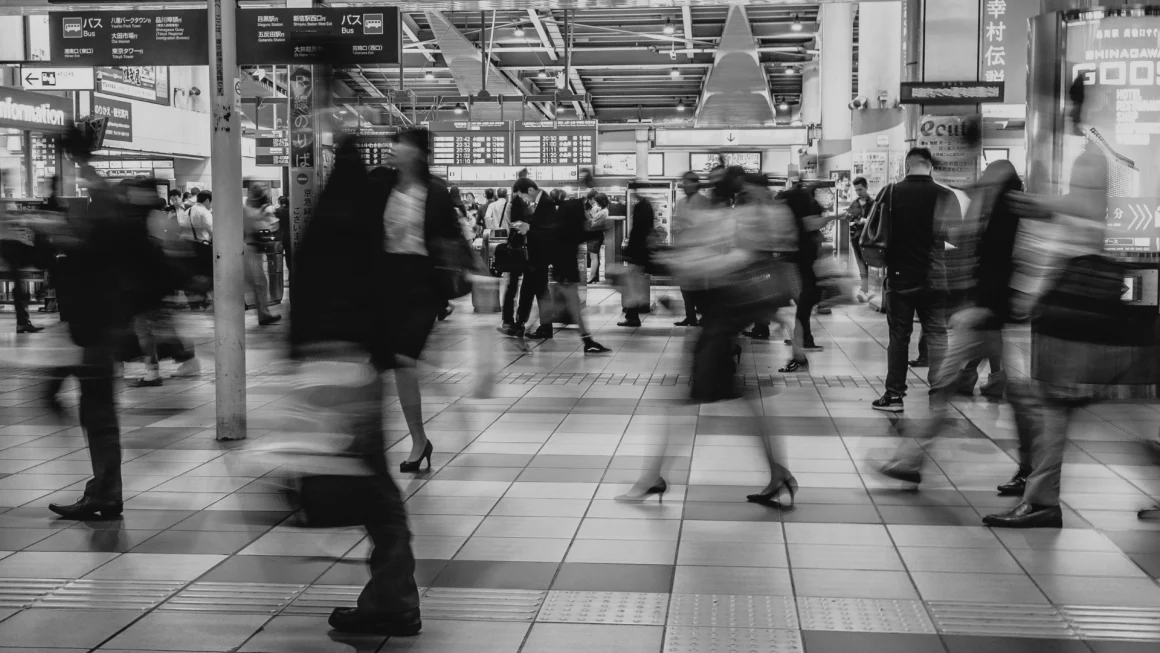A story by Phoebe Truong
The world’s first steam locomotive was invented in 1802. A century after in 1903, the Wright brothers invented and flew the first airplane. Long-distance travel became a competing field for the two modes of transport, with the overwhelming dominance of airplanes especially since the liberalization of the airline industry in the 1980s that has since rolled out multiple low-cost airlines. On many routes nowadays, one will find flying cheaper than any other modes of transport, and oftentimes the most time-economical ones. In many countries, train travel became obsolete.
However, things are starting to change.
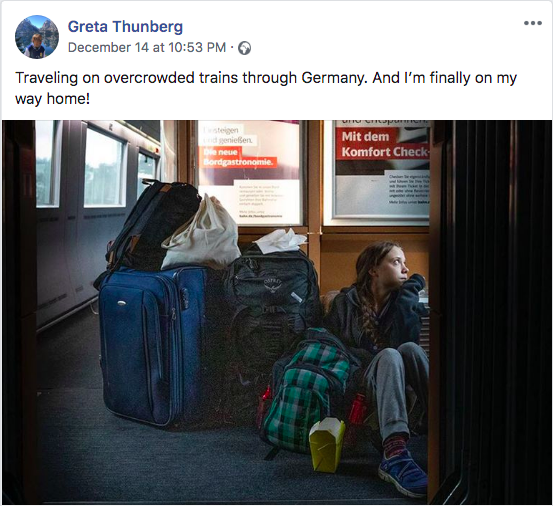
It started with one word — or two words: CLIMATE CHANGE
The 16-year-old climate activist Greta Thunberg has not been on a plane since 2015, and she’s been encouraging people to give up flying. Young people worldwide, especially in Greta’s home country Sweden, follow suit. On one hand, in July 2019, the number of Sweden’s air passenger numbers went down 4% compared to the same time the previous year. On the other hand, rail transport saw 17% increase in passengers this summer compared to 2018. Europe’s largest international passenger rail company, the Austrian ÖBB, has seen a 10% growth this spring and summer over 2018 on some of its lines, including the ones that run from Vienna to Zurich, and Rome to Munich.
Yet worldwide, in the next 20 years, the number of flight passengers is expected to double, and by 2050, aviation could account for up to a quarter of the global carbon budget. Ryanair, the commonplace cheap European airline, has joined the ranks of the 10 most carbon emitters, preceded only by coal plants. “There is a continuous development of aircraft technology that cannot keep pace with the increase in travel,” said Jonas Akerman, a head researcher in sustainable transportation systems at Stockholm’s Royal Institute of Technology.
At the brink of the climate crisis, European leaders are beginning to reconsider how much plane travel and other alternatives should be encouraged. The Dutch government is lobbying for an E.U.-wide tax on aviation. France this year announced it would introduce an eco-tax on flights originating at French airports, with the money to be reinvested in rail networks and other environmentally friendly transport.
Social and business activists also take part in pushing the sustainable travel movement forward. Founded by former rail industry manager Mark Smith, “The Man in Seat 61” website seat61.com is dedicated to facilitating train and ferry travels across all continents, with comprehensive timetables, ticket booking, tips and so on. Omio — a Berlin-based booking platform — combines and compares different modes of transport such as train, bus, and flying… from any point A to point B within Europe. Climate Perks aims to approach the management level of business traveling, where employers are encouraged to offer “journey days” and allow time for longer journeys for employees, thus shifting the travel habits from airborne to other more sustainable options.
Expedia’s Multi-generational travel trends report for Europe showed Gen Z is the likeliest generation to travel by train with 13% saying they traveled by rail for their latest trip, compared with 9% of Millennials and 8% of Boomers. It means the future of our kind — young people — are most eager to reduce their carbon footprint, opt to limit air travel in favor of more environment-friendly means of transportation.
The renaissance of rail travel
Posed as the most common and arguably the most environmentally friendly alternative to flying is the train. Yet, speed and comfort remain among the most common barriers for people to switch from the plane. As for the price, which is now relatively high compared to flying, especially for long distance and high-speed, the liberalized market will regulate and make itself competitive as the demand for this mode of transport grows. It will take some time nevertheless.
Breakthroughs in high-speed rail have been constant though receiving rather little attention. Having been around for several decades, the latest technology in the field is Maglev (short for “magnetic levitation”), which uses strong electromagnets that lift and propel the train forward on a cushion of air, thus no mechanical friction, minimum noise, and zero carbon emissions. It also affords to operate punctually in all weather conditions as opposed to airplanes, ships, and automobiles. The world’s fastest commercial maglev is run by Shanghai, China, at 431km/h since 2003, while Japan, another pioneer of high-speed rail, broke its own world record, hitting 603 km/h during a test run of an SC Maglev train in 2015, which inspired China’s prototype for the commercial adaptation. This is faster than traveling by plane in many cases, taken into account the time transporting to and spent at the airport before and after the flight. “Take Beijing to Shanghai as an example — counting preparation time for the journey, it takes about 4.5 hours by plane, about 5.5 hours by high-speed rail, and [would only take] about 3.5 hours with [the new] high-speed maglev,” said CRRC deputy chief engineer Ding Sansan, head of the train’s research and development team.
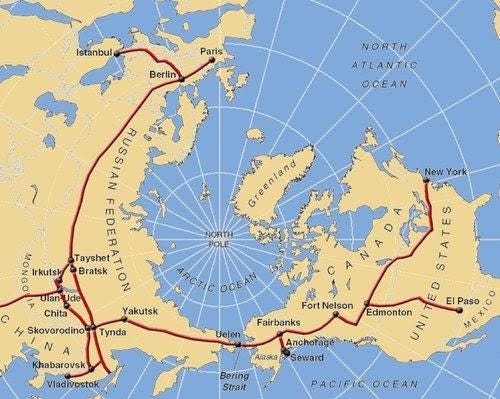
Along with the increase in speed, the expansion of railway networks is in the making. Europe-Asia sees dense connectivity, with regular services now connect roughly 35 cities in China with roughly 34 cities in Europe. At the same time, China is making efforts to realize the Belt and Road initiative, where infrastructure investments are made to link economic and social ties with 65 countries in Asia, Africa and Europe. It is likened to the Silk Road that connected Europe to Asia centuries ago, enriching traders from the Atlantic to the Pacific. Another ambitious project being discussed is the Intercontinental Railway — a continuous rail transportation link between North America, Russia, Asia and Europe.
Making the journey count
With train travel getting trendy again, opportunities for train tourism is booming, not just as a mean to get from A to B but as a journey by itself.
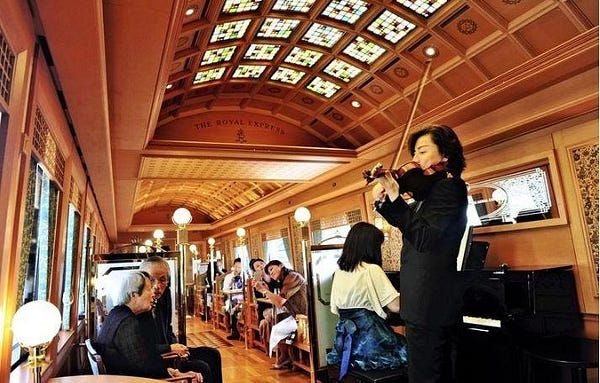
In 2017, The Royal Express line was launched, carrying passengers from the touristic hub Yokohama to the less-traveled-by Izukyu-Shimoda within 3 hours. It aimed to revitalize tourism demand for Izu by showcasing the area’s natural beauty that traveling by plane would miss out, combined with the old school royalty vibe onboard through design, food, music (live violin and piano performance).
In the same year, the world’s longest-running escape game happened, departed from Helsinki on December 13th, and traveled 1,000 kilometers to Rovaniemi, the capital of Lapland. Inspired and named exactly after Agatha Christie’s detective novel “Murder on The Orient Express”, the game took place on a 13-hour passenger train journey where the players immersed in the real-life simulation with actors playing the characters and interacted with players. The game was livestreamed with features for an online audience to influence the game as it was happening. Although it was a one-time event made to promote the movie remake released the same year, the idea is rather exciting and worth exploring, especially as more and more people spend long hours on the train and look to make the best of the journey.
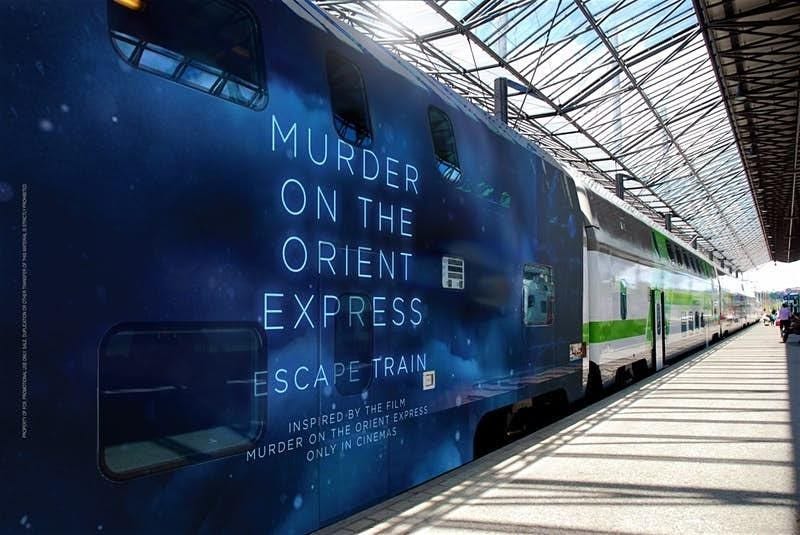
Meanwhile, themed train tours have become more popular in the American continent and new routes have been opened. The recently launched winter 2019 Alaska Railroad ‘Hops on the Rail’ Brewery Tour invites beer advocates on a day trip to the most famous breweries in Alaska, namely along the route of Anchorage to Talkeetna, and generous beer tasting of minimum 16 kinds. “We know the local craft beer scene is of interest to many of our guests, and it’s great to offer another way to experience the Railbelt town of Talkeetna.” said Dale Wade, vice president of marketing and customer service for the Alaska Railroad.
These are just a few examples. The growing trends toward experiential travel, slow travel, and luxury invariably point toward a growth in leisure train travel. It opens multiple doors in making the rail journey part of the holiday experience — like an on-land cruise.
Train travel as a new tourism and economic development tool
The lucrative transport movement nonetheless needs not to stray too far away from its purpose — sustainable travel. Balancing between tourism and sustainability has always been the key question that each territory would have a different answer to. In developing countries, transport planning and management often lacks planning expertise, resulting in clashes with environmental values and local livelihoods, and finance is almost always a problem. One example is the controversial Maya train project in Mexico.
Announced shortly after Mexican president López Obrador’s inauguration in 2018, the Maya train project is the most ambitious new passenger rail line to be built in Mexico in decades, consisting of 1,500km long railroad connecting old railways and to-be-built ones linking cities and tourist sites in the Yucatan peninsula with rural areas and rainforests. It is hoped to stir up tourism, employment and economic activities in the often-neglected Southeast Mexico and considered one of Obrador’s key projects in his term of office. The Maya train project will cost roughly $6–8 billion USD, expected to open in 2023.
Yet in the embryo phrase, oppositions have emerged from both the scientific environmental community and the local indigenous community alike. “This project isn’t planned for us, the common people. It’s a tourism project that will only benefit the wealthy and foreigners. We, who are the owners of the land, will only see it pass by, because there aren’t stations planned for most of our communities.”, as written in an open letter from local community representatives sent to president Obrador in November 2018. On the other hand, it allegedly poses environmental risks to the region’s underground water networks, especially its delicate sewage system, and affect areas where many of Mexico’s dwindling population of jaguars. “After all of the ecological disasters of the past decades in the name of ‘development’… …you can’t start a project of this nature without a broad study of the ecological, cultural and archaeological impacts”, voiced in another letter sent from scholars including anthropologists, geographers, and ecologists.
Nevertheless, construction plans are moving ahead, without meeting vital requirements of consensus from local communities. But the people are not giving up. Assemblies were held in December 2019 along the routes where the railway construction would take place, out of concerns that the project will do more harm than good. After all, the country has witnessed a number of white elephant projects before — ones that cost fortunes and reaped ecological disasters in the attempt to put an infrastructure project designed to draw tourists, such as Cancun, once a small fishing village, now a tourism hub suffering from deforestation, pollution, sewage problems, and habitat loss.
The triple bottom line
In light of the increased demand for resilient and low-carbon infrastructure, the pro-rail movement provides exciting new grounds for transport and tourism innovations. The challenge then lies in balancing economic interests with social and environmental sustainability — thus the triple bottom line in creating real lasting values — where utmost environmental care and a detailed strategy for steering benefits to local communities must be taken.
This is a story of the Futurist Club
By Science of the Time
Written by: Phoebe Truong

Currently pursuing a Master in Hospitality Management degree at the University College of Hospitality and Culinary Arts Sant Pol de Mar, Spain. Passionate about facilitating the best authentic travel experiences for myself and for others, at the same time making the world a better place.

